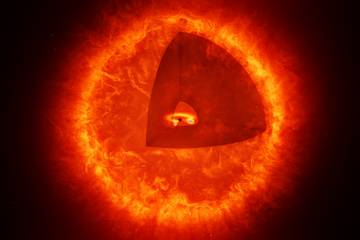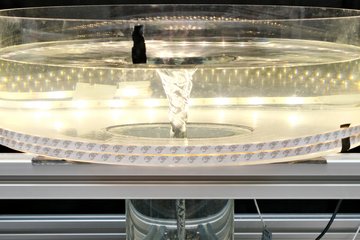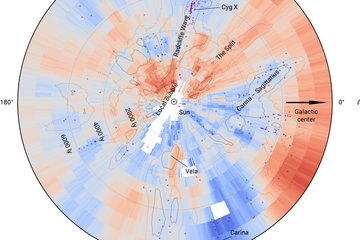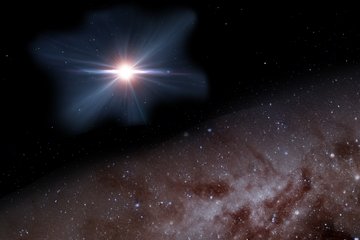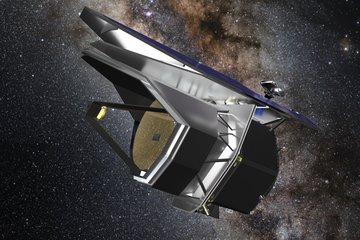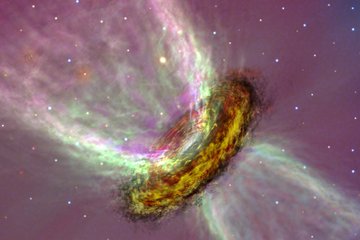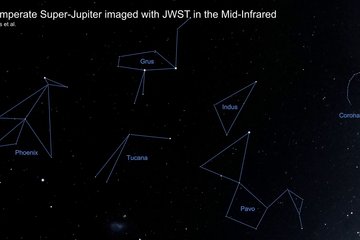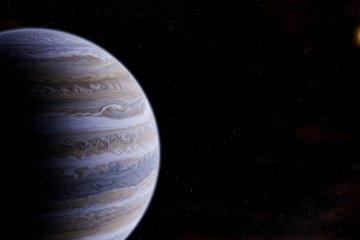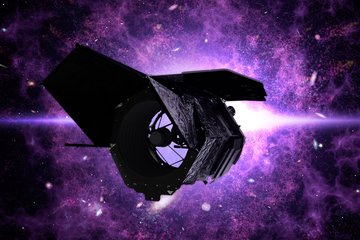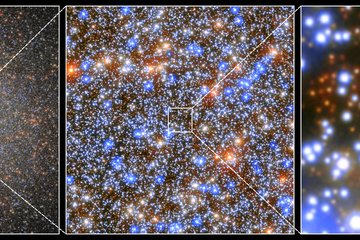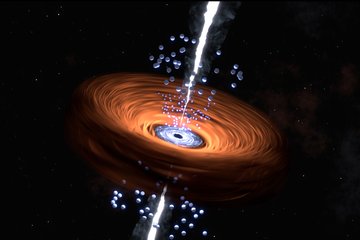Terrestrial planet formation under the looking glass
Astronomers find a cosmic horseshoe around a young star, a possible brick factory for building planets.
Studying the formation of planets close to their host stars by observations has been extremely challenging so far. As part of an international collaboration, scientists of the Max Planck Institute for Astronomy in Heidelberg, Germany, have employed a new instrument called MATISSE which has now uncovered evidence for a vortex at the inner rim of a planet-forming disk around a young star. It appears to move on an orbit around its star similar to Mercury’s orbit around the Sun. Astronomers think such vortices are sites where small particles converge and grow to form planets’ building blocks. MPIA contributed considerably to building MATISSE, an infrared imager for ESO’s Very Large Telescope Interferometer.
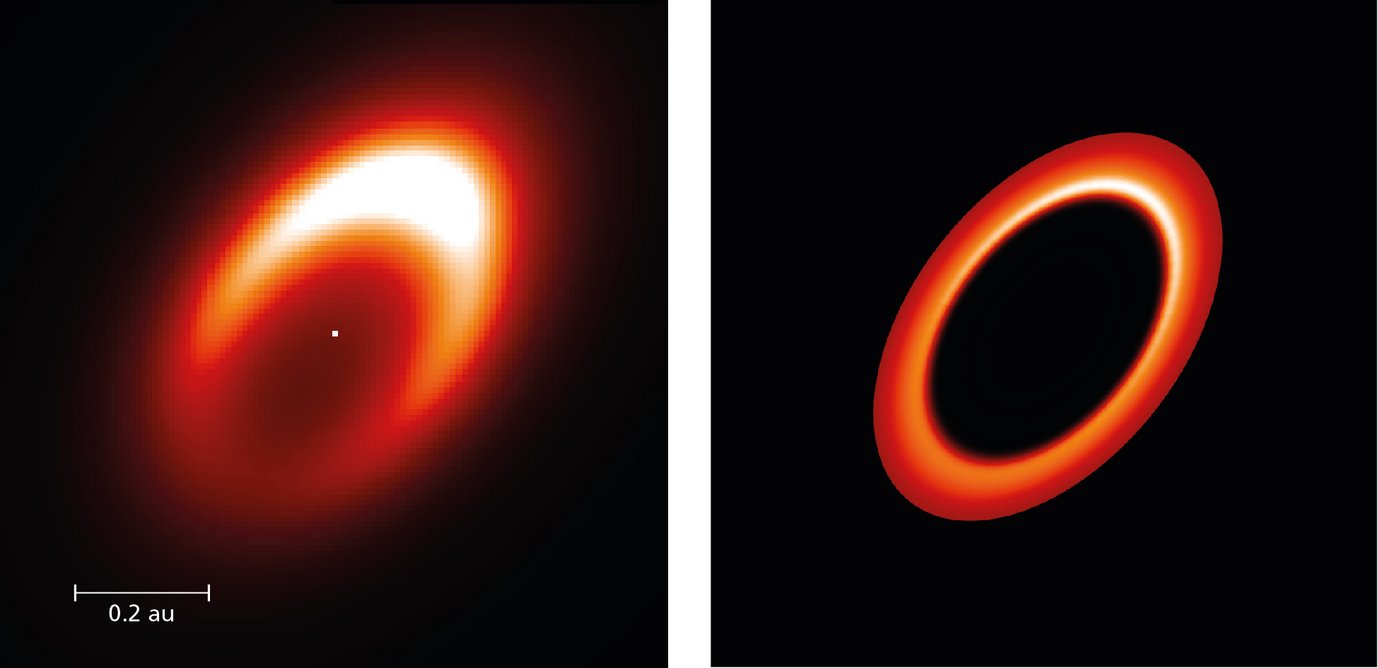
Astronomers have discovered more than 4000 planets orbiting stars other than the Sun. However, scientists still have to figure out the details of how those planets form from the disks made of dust and gas that surround their parent stars. During recent years, sophisticated instrumentation has provided close-up views on such planet-forming disks. However, they generally lack the angular resolution and sensitivity to probe the disks’ inner regions where terrestrial planets are supposed to emerge from rocky building blocks that eventually grow from tiny dust grains.
An extensive collaboration of scientists led by Jozsef Varga from Leiden Observatory, The Netherlands, with essential contributions made by astronomers of the Max Planck Institute for Astronomy (MPIA) in Heidelberg, Germany, have now managed to overcome those limits by utilising a new instrument called MATISSE (Multi AperTure mid-Infrared SpectroScopic Experiment). The observations obtained at infrared wavelengths provide evidence for a vortex embedded inside a ring of hot dust at the inner edge of the protoplanetary disk of the young star HD 163296. The potential vortex revealed itself as a hot spot that produces an asymmetry at the disk’s inner edge. The scientists inferred that it revolves around the star roughly within a month by including published data. Its trajectory resides at a distance from the central star comparable to Mercury’s orbit around the Sun.
Theoretical calculations have predicted the occurrence of vortices in disks, where material swirls around like a tornado and accumulates dust. “The higher dust density induces faster grain growth than anywhere else in the disk, which may render those whirls to be efficient factories to produce the building blocks of future planets,” Roy van Boekel explains. He leads the Protoplanetary Disk Science Group and manages the MATISSE project at MPIA. Some of the newly formed rocky bricks collide under high speeds which causes grinding of the material to tiny grains. They can attain higher temperatures than larger pebbles which is the likely origin of the hot spot found in the data.
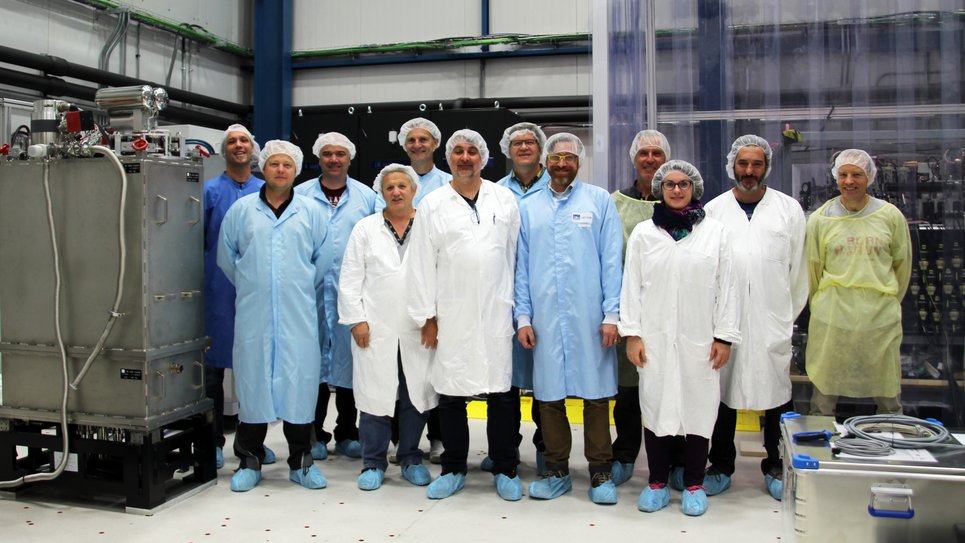
This spectacular result will appear in the scientific journal Astronomy & Astrophysics as the MATISSE team’s first scientific publication. “MATISSE is a new infrared instrument for the VLTI (Very Large Telescope Interferometer) which the European Southern Observatory (ESO) operates at its Paranal site in Chile,” Michael Lehmitz, an engineer at MPIA says. “MPIA contributed to an international consortium that designed and built MATISSE by integrating the delicate optics into a cryostat that cools them down to -235° C.” Subsequent low-temperature performance tests were also carried out at MPIA. MATISSE combines the light collected from up to four individual VLT units, performing spectroscopic and imaging observations. With such a design, the facility simulates the imaging power of a telescope of up to 200 metres in diameter, capable of producing the most detailed images ever at mid-infrared wavelengths.
“We explicitly designed MATISSE to probe the inner zones of exoplanet-forming disks that have not been accessible before by available astronomical instrumentation,” Thomas Henning, director at MPIA and Co-PI of MATISSE points out. “I am proud and excited that the discovery of a potential vortex in the disk of HD 163296 demonstrates that we can investigate the processes that produce Earth-like planets at small distances from the host star.”
The study presented here belongs to an extensive Guaranteed Time Observation (GTO) program, which investigates the planet-forming mechanisms in the inner zones of protoplanetary disks. Over the next few years, the GTO program will study many more systems like HD 163296. This way, it will improve our understanding of how the formation of Earth-like planets proceeds around a wide variety of young stars. MPIA received a guaranteed amount of observing time to reward their contributions to building MATISSE.
MN


